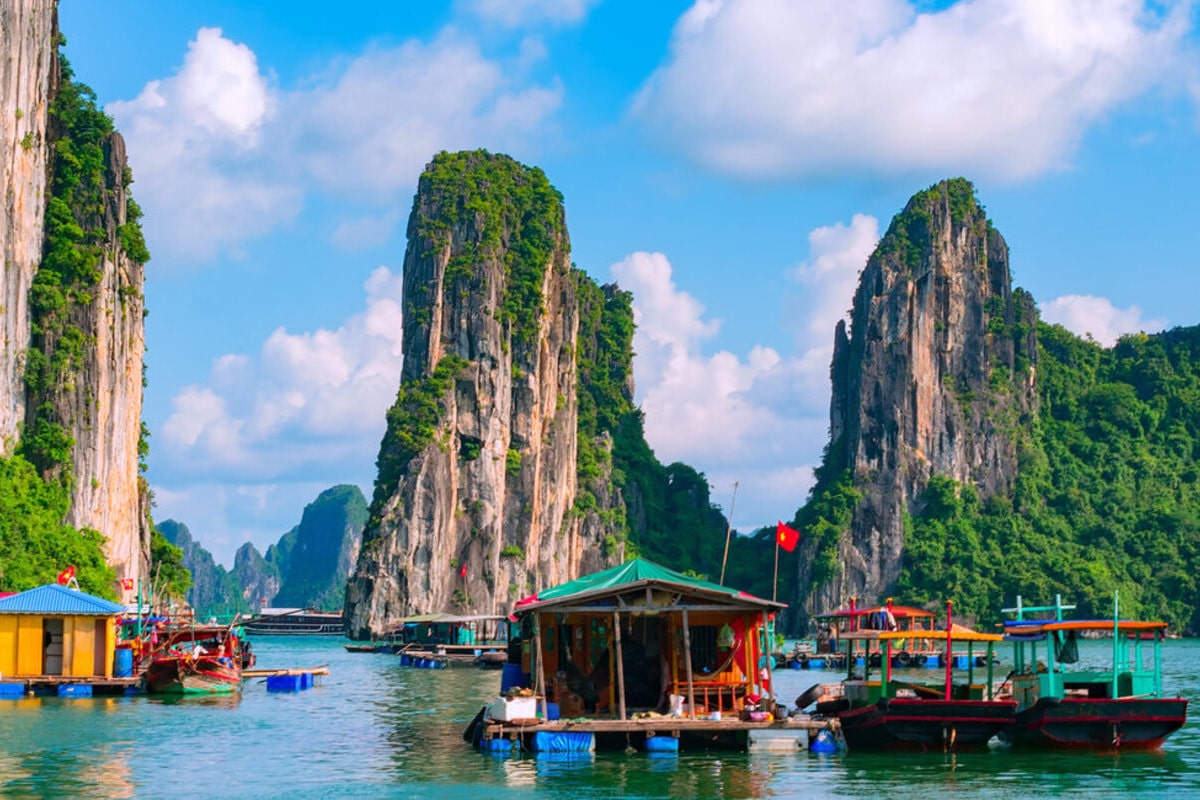Vietnam is a country where ancient traditions meet modern progress, where street food rivals the world’s top cuisines, and where breathtaking landscapes captivate every traveler. Located in Southeast Asia, Vietnam’s history is deeply intertwined with its rich culture, and each region offers a unique atmosphere. While many people associate Vietnam primarily with the war of the 20th century, the country hides countless secrets and wonders. In this article, we present fascinating facts about Vietnam that you may not have known.
- Vietnam has one of the highest population densities in the world, yet one-third of the country is covered by forests and jungles. This creates a remarkable balance between natural ecosystems and urban development. These forests are home to rare species, including the elusive saola, one of the most mysterious mammals on the planet. This animal is so rare it has been nicknamed the Asian unicorn.
- Motorcycles are not just a mode of transportation in Vietnam—they are a way of life. In Hanoi and Ho Chi Minh City, there is almost one motorcycle per person, with over 45 million motorcycles nationwide. People use them to carry everything from furniture to live pigs. The traffic may appear chaotic, but locals navigate it with remarkable skill.
- Vietnam is the second-largest coffee exporter in the world, just behind Brazil. Its coffee culture has unique characteristics—people often enjoy iced coffee, coffee with condensed milk, or even with egg cream. Egg coffee, invented in Hanoi, has a smooth, creamy taste and is considered a national specialty. Tourists often try it as an exotic and memorable drink.
- Unlike many of its neighboring countries, Vietnam uses the Latin alphabet instead of a character-based writing system. This was introduced by Jesuit missionaries in the 17th century to simplify the language for European learners. As a result, literacy became more accessible, supporting the spread of education. Today, this also makes learning foreign languages easier for Vietnamese students.
- Vietnam has one of the longest coastlines in Southeast Asia—over 3,200 kilometers. Along this coastline are countless beaches, bays, and resorts, including the famous Ha Long Bay. With over 1,600 limestone islands, the bay forms an extraordinary natural seascape. It has been recognized as a UNESCO World Heritage Site.
- Vietnamese cuisine is known for its harmony of taste, aroma, and texture. Dishes typically combine five key flavors: sour, sweet, bitter, spicy, and salty. Many street foods are prepared right in front of customers, creating a lively culinary experience. The most iconic dish is pho, a soup made with rice noodles, meat, and herbs.
- In many Vietnamese homes, there is an altar dedicated to ancestors, as ancestral worship plays an important role in daily life. On memorial days, people light incense, offer food, and honor the spirits of deceased relatives. This ritual strengthens family bonds and is viewed as a sign of respect for previous generations. Even young people actively participate in these traditions.
- Son Doong Cave in Vietnam is considered the largest cave in the world and continues to amaze scientists. It contains its own river, jungle, and even cloud formations inside. The cave is over 9 kilometers long and reaches up to 200 meters in height. It was discovered by chance in 1991 and explored in detail only years later.
- No single religion dominates in Vietnam—Buddhism, Confucianism, Taoism, and Catholicism coexist peacefully. Many festivals, such as Tet (Vietnamese New Year), blend elements from different faiths. This diversity contributes to a spiritually rich and inclusive environment. People in Vietnam are generally open to various philosophical beliefs.
- Ho Chi Minh City, formerly known as Saigon, is the economic and cultural heart of Vietnam. Modern skyscrapers stand side by side with traditional markets and colonial-era buildings. The city is always bustling, from dawn until late at night. Despite the name change, Saigon has retained much of its historic charm.
- Water puppetry is one of Vietnam’s oldest traditional performing arts, dating back to the 10th century. Shows are held on water, where puppeteers stand waist-deep behind a screen and control the figures. Performances depict folk legends and humorous scenes from village life. This art form has remained authentic through the centuries.
- Vietnam has one of the world’s lowest obesity rates, largely due to an active lifestyle and a healthy diet. People walk frequently, ride bicycles, and consume fresh vegetables and rice-based meals. Although fast food is becoming more popular in cities, traditional eating habits still dominate. The government promotes healthy living through public education campaigns.
- Education is highly valued in Vietnam, and students often follow demanding academic schedules. Many attend extra classes after school to improve their exam results. The literacy rate exceeds 94 percent, and knowledge is seen as a path to a better future. Parents are deeply committed to ensuring quality education for their children.
- Vietnam is one of the world’s leading rice producers, with millions of hectares dedicated to rice fields. Harvesting seasons are marked by festivals, rituals, and family gatherings. Rice is more than just a staple food—it is a cultural symbol of abundance and hard work. Many Vietnamese proverbs are centered around rice and agriculture.
These incredible facts about Vietnam offer a fresh perspective on the country. Its diversity, blend of tradition and innovation, and deep respect for heritage make it truly captivating. Vietnam is a place where every detail holds meaning and history. The more you learn about it, the more you’ll want to experience it firsthand.





